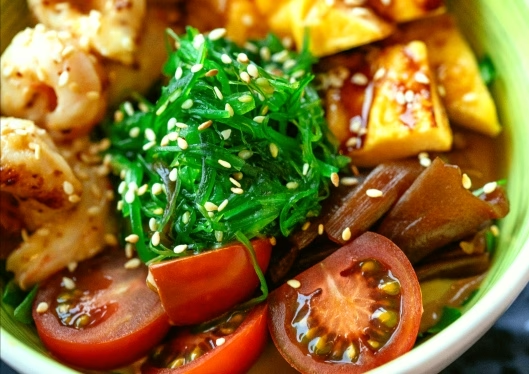Tofu is a versatile ingredient in home cooking. Simply tossed with soy sauce, pan-fried, or added to soup, it’s delicious. There are many varieties of tofu, including firm tofu, soft tofu, frozen tofu, and egg tofu.
However, the textures of firm tofu and soft tofu differ slightly. What’s the difference? Why does frozen tofu have so many holes? And why is tofu so oily? This all has to do with the production methods and principles of tofu.
White, soft tofu can be chewy and melt-in-your-mouth, while others are firmer. The production process actually varies. The most common tofu-making method uses soybeans and water as the main ingredients. The soybeans are soaked, ground into a slurry, and then heated and boiled. After filtering out any impurities, a coagulant is added, stirred, and then poured into a container and left to solidify. The most common types of tofu include firm tofu, soft tofu, and egg tofu.
Firm tofu
This is a traditional type of tofu made using edible gypsum (calcium sulfate) as a coagulant. Pressed tofu has a firmer texture. During tofu making, the tofu is pressed to squeeze out excess water, resulting in a slightly lower water content than soft tofu. Pressed tofu is made with edible gypsum calcium sulfate, resulting in a higher calcium content than soft tofu.
Soft tofu
Packed tofu available on the market is soft tofu, using magnesium chloride or gluconolactone as a coagulant to coagulate and precipitate the protein. The pressure and time used in making soft tofu are lower, resulting in a higher water content and a softer texture.
Egg tofu
Egg tofu is a pale yellow tofu with a soft and tender texture. Made with soybeans and eggs, egg tofu contains egg ingredients, resulting in a delicate and tender texture. Some egg tofu is enriched with soy sauce, mirin, kelp broth, and other ingredients, which contribute to its distinct flavor and texture from regular tofu.
However, there is another type of egg tofu, such as lotus tofu, which is primarily egg-based and contains no soy. It is considered an egg product, so be sure to check the label when choosing.
Frozen Tofu
Frozen tofu, which has holes like a sponge, is made by freezing regular tofu. If you have leftover tofu at home, simply cut it into pieces and store it in the freezer to make your own frozen tofu!
Why does frozen tofu have holes? Understanding the freezing process
Does freezing tofu change its texture? During the freezing process, the volume and structure of the tofu change due to the freezing effect, causing the tiny pores to expand. After it is removed from the freezer, the water is lost, and the tofu’s structure is damaged by the expansion, preventing it from returning to its original shape. This creates a porous appearance and a firmer texture.
Others: Hundred-sheet Tofu
Although Hundred-sheet Tofu looks similar to regular tofu, its texture is completely different, with a stronger, firmer texture. Although it’s called tofu, it’s actually more of a soy product. Hundred-sheet Tofu is made with soybeans, but other ingredients and processing methods are different from tofu.
The elasticity of 100-sheet tofu comes from a mixture of soybean oil and other fats mixed with soy protein. Starch and thickeners are used to increase its viscosity, firmness, and chewiness. Flavorings, colorings, and spices are also used to enhance its appearance and flavor.
To create its texture, 100-sheet tofu is high in fat, with approximately 215 calories per 100 grams. Compared to traditional tofu, which has approximately 50-80 calories per 100 grams, this is three times as much. If you enjoy 100-sheet tofu, be sure to monitor portion size to avoid consuming too much calories and fat.
Different types of tofu have different cooking methods.
Due to their appearance and texture, different types of tofu are suited to different cooking methods. Flat tofu, with its firmer texture than soft tofu, is ideal for pan-frying and making braised tofu. For beautiful pan-fried tofu, refer to “How to Pan-Fry Golden Tofu Without Breaking.” Besides pan-frying, soft tofu is also suitable for cold salads and soups. Frozen tofu, with its holes, absorbs the broth perfectly!
By understanding the production methods and characteristics of different types of tofu, you can try to match their taste and choose the appropriate cooking method to cook tofu dishes.


Leave a Reply